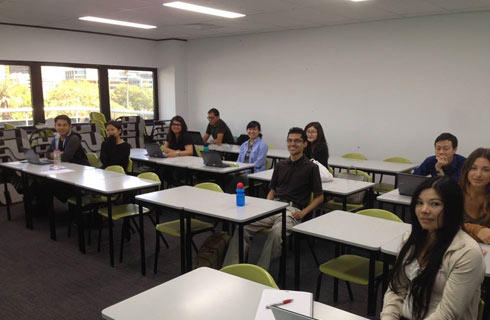Doctor of Pharmacy Professional (Pharm.D.)

学历文凭
Ph.D.

专业院系

开学时间

课程时长

课程学费

国际学生入学条件
Undergrad transcripts
Statement of purpose
2 letters of recommendation
Resume
TOEFL/IELTS score.
Minimum Scores for full admission:
TOEFL ibt: 79
IELTS: 6.5
IDP—雅思考试联合主办方

雅思考试总分
6.5
- 雅思总分:6.5
- 托福网考总分:79
- 托福笔试总分:160
- 其他语言考试:Duolingo - 105, PTE - 58
CRICOS代码:
申请截止日期: 请与IDP联系 以获取详细信息。
课程简介
相关申请
 预科
预科 奖学金
奖学金 实习机会
实习机会 在校学习
在校学习 跨境学习
跨境学习 校园授课-线上开始
校园授课-线上开始 在线/远程学习
在线/远程学习
开学时间&学费
学费信息仅供参考,请与IDP联系以获取详细信息
| 开学时间 | 时长 | 学费 | 地点 |
|---|
本校相关课程

Bachelor of Science in Diagnostic Medical Sonography
学历文凭
Bachelor Degree
开学日期
课程费用总额


Master of Science in Pharmaceutics - Industrial Pharmacy
学历文凭
Masters Degree
开学日期
课程费用总额


Bachelor of Science in Sports Sciences
学历文凭
Bachelor Degree
开学日期
课程费用总额


Bachelor of Science in Health Science
学历文凭
Bachelor Degree
开学日期
课程费用总额


Bachelor of Science in Health Science/Master in Public Health
学历文凭
Combined Baccalaureate and Master's Prog
开学日期
课程费用总额


Bachelor of Science in Exercise Science and Wellness
学历文凭
Bachelor Degree
开学日期
课程费用总额

其他相关课程

药学理学硕士
 滑铁卢大学
滑铁卢大学学历文凭
Masters Degree
开学日期
课程费用总额


药学科学学士学位
 达尔豪斯大学
达尔豪斯大学学历文凭
Bachelor Degree
开学日期
课程费用总额


药剂师文凭
 尼亚加拉学院
尼亚加拉学院学历文凭
Bachelor Degree
开学日期
课程费用总额


社区药学助理证书
 尼亚加拉学院
尼亚加拉学院学历文凭
Bachelor Degree
开学日期
课程费用总额


药剂师文凭
 汉博学院
汉博学院学历文凭
Bachelor Degree
开学日期
课程费用总额


药学理学硕士
 纽芬兰纪念大学
纽芬兰纪念大学学历文凭
Masters Degree
开学日期
课程费用总额










 美国
美国
